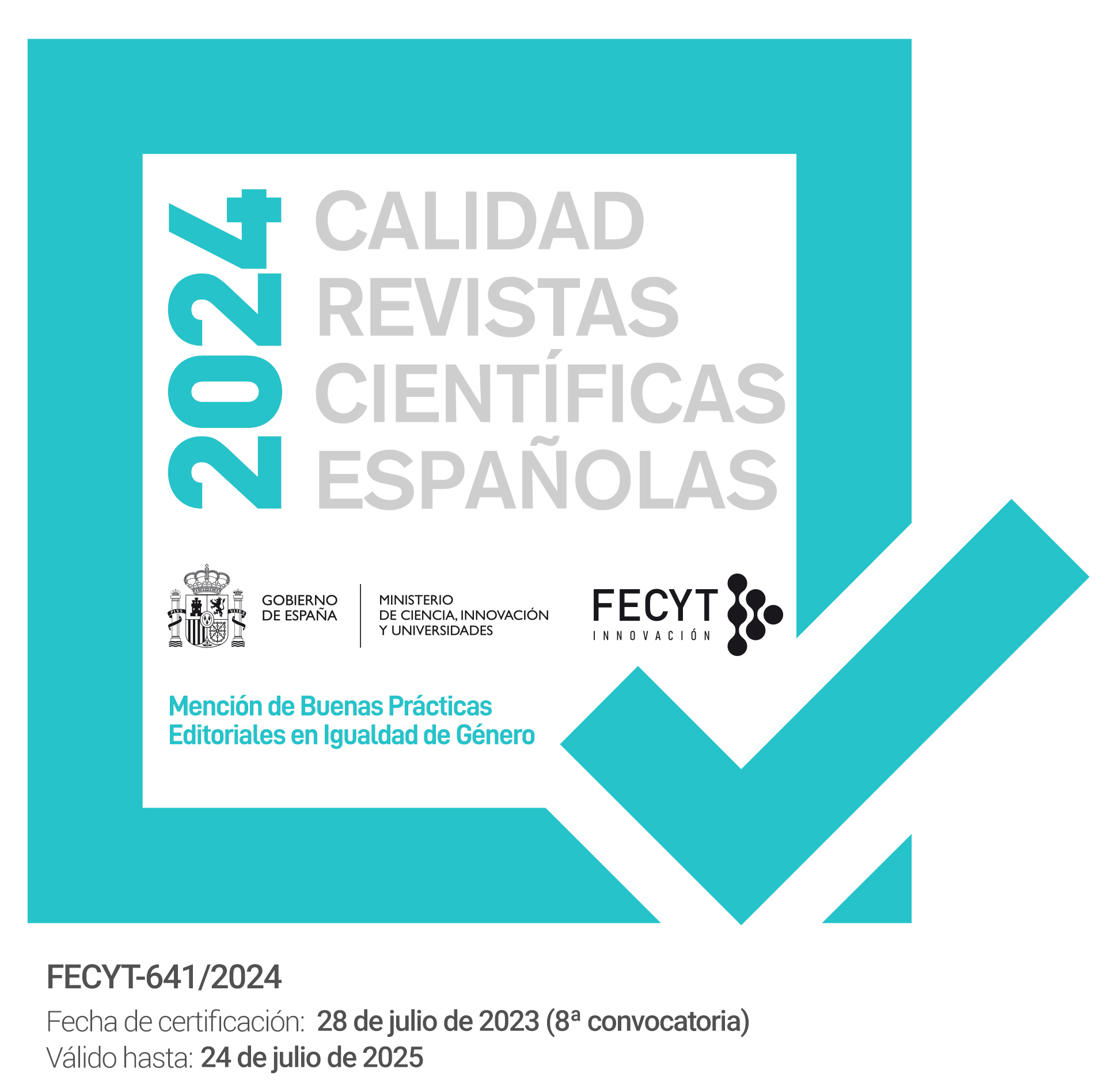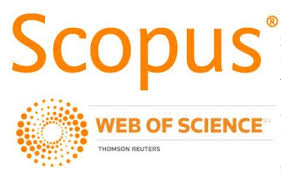Text-visuality on digital writing. Transmediality, interaction and fragmentarism in the case of tatuaje (2014)
DOI:
https://doi.org/10.12795/PH.2021.v35.i02.06Keywords:
transmedia, electronic, literature, fragmentarism, interactivity, TatuajeAbstract
The notion of transmediality has been almost indissolubly associated with different media spaces for each medium integrated in a work. Through the analysis of Tatuaje (2014), the article proposes that this is not only necessary or exclusive, but also implies a modification of the parameters surrounding this notion of transmediality, since it changes aspects such as the type of interaction required and the relevance of the fragmentary traits inherent to the media leaps. As the article exposes, this is possible due to the text-visual aspect of digital writing and the formal flexibility of the Web, achieving greater hybridization and a powerful media symbiosis, although this results in the detriment of the full exploitation of each medium due to the necessary harmonization imposed by its agglutination on a unified canvas.
Downloads
References
Borham Puyal, M. (2018). Recuperando las madres de la novela: Jane Barker y la narrativa romancesca del XVIII. En Y. Romano y S. Velázquez (Coords.), Las inéditas: voces femeninas más allá del silencio (pp. 401-412). Ediciones Universidad de Salamanca.
Escandell Montiel, D. (2014). Escrituras para el siglo XXI. Literatura y blogosfera. Iberoamericana-Vervuert. https://doi.org/10.31819/9783954872350
— (2018, junio 13). Detectives 2.0: el género negro latinoamericano en línea [conferencia]. Genéro negro y transmedialidad en Argentina, Chile, México y Colombia, Universität Paderborn.
— (2019). Textovisualidades transatlánticas en la tuiteratura: hibridación, imagen y escritura no-creativa. En M. Martínez Deyros y C. Morán Rodríguez (Eds.), Pasado, presente y futuro del microrrelato hispánico (pp. 155-168). Peter Lang.
Gómez Jurado, J. (2012). La leyenda del ladrón. Planeta.
Gómez, V.P. (2018). Leer mirando. Elementos para la comprensión y el análisis de la literatura digital latinoamericana. Rassegna iberistica, 41(110), 283-298.
Gonçalves, E.M. (2012). De narratividade à narrativa transmídia: a evoluçao do processo comunicacional. En C. Campalans (Eds.), Narrativas Transmedia: entre teoría y prácticas (pp. 15-25). Universidad del Rosario.
Ito, M. (2010). Mobilizing the Imagination in Everyday Play: The Case of Japanese Media Mixes. En S. Sonvilla-Weiss (Ed.), Mashup Cultures (pp. 79-97). Springer. https://doi.org/10.1007/978-3-7091-0096-7_6
J.M., R. (2015). Tatuaje. Centro Cultura Digital.
J.M., R., Aranda, L., Gordillo, G., et al. (2014). Tatuaje. Centro Cultura Digital.
Jenkins, H. (2003). Transmedia Storytelling. MIT Technology Review.
Llosa Sanz, Á. (2013). Más allá del papel. El hilo digital de la ficción impresa. Academia del Hispanismo.
Long, G. (2007). Transmedia Storytelling. Business, Aesthetics and Production at the Jim Henson Company. Massachusetts Institute of Technology.
Lucía Megías, J.M. (2012). Elogio del texto digital. Fórcola.
Mora, V.L. (2015a, 28 abril). Diálogos: Literatura transmedia [mesa redonda junto a D. Escandell y J. F. Ferré]. II Seminario Internacional de Narrativas Transmediales, Universidad de Granada.
— (2015b, 30 abril). Notas sobre la narrativa transmedia. El Boomeran(g).
— (2015c, 4 octubre). Fragmentarismo y fragmentalismo en la narrativa hispánica actual. Diario de lecturas.
Morán Rodríguez, C. (2018). Autorrelatos de perfil: las máscaras de José Luis García Martín en Facebook. Caracteres. Estudios culturales y críticos de la esfera digital, 7(1), 13-64.
Negroponte, N. [1995]. El mundo digital. Traducción de Marisa Abdala. Sine Qua Non, 2000.
Nelson, T.H. (1965). Complex information processing: a file structure for the complex, the changing and the indeterminate. En L. Winner (Ed.), ACM 65 Proceedings of the 1965 20th National Conference (pp. 84-100). ACM. https://doi.org/10.1145/800197.806036
Niantic y The Pokémon Company. (2016). Pokémon GO. Niantic.
Noguerol, Francisca (2013). Barroco frío: simulacro, ciencias duras, realismo histérico y fractalidad en la última narrativa en español. En A. Esteban y J. Montoya (Eds.), Imágenes de la tecnología y la globalización en las narrativas hispánicas (pp. 17-32). Iberoamericana-Vervuert. https://doi.org/10.31819/9783954871940-002
Ortega, É. (2020). La editorial del Centro de Cultura Digital: de la experimentación en práctica a la creación de nuevos públicos. Bibliographica, 3(1), 158-184. https://doi.org/10.22201/iib.2594178xe.2020.1.64
Rajewsky, I.O. (2002). Intermedialität. Uni-Taschenbücher.
Shattuck, R. (1984). The Innocent Eye. Museum of Fine Arts Publications.
Talens, J. (2000). El sujeto vacío. Cultura y poesía en el territorio Babel. Universitat de València-Cátedra.
Published
How to Cite
Issue
Section
License
Copyright (c) 2021 Daniel Escandell Montiel

This work is licensed under a Creative Commons Attribution-NoDerivatives 4.0 International License.
The printed and electronic editions of this Journal are edited by the University of Seville Editorial, and the source must be cited in any partial or total reproduction.
Unless otherwise indicated, all the contents of the electronic edition are distributed under a license of use and distribution “Attribution-NonCommercial-NoDerivatives 4.0 International” . You can view the informative version and the legal text of the license here. This fact must be expressly stated in this way when necessary.
Authors who publish in this journal accept the following conditions:
- The author/s retain copyright and grant the journal the first publication right, and accept it to be distributed with the Creative Commons By NC ND 4.0 licence, which allows third parties to use what is published whenever they mention the authorship of the work and the first publication in this journal and whenever they do not make commercial use and reuse it in the same way.
- Authors can make other independent and additional contractual agreements for the non-exclusive distribution of the article published in this journal (e.g., include it in an institutional repository or publish it in a book) provided they clearly indicate that the work was published for the first time in this journal.
Authors are allowed and recommended, once the article has been published in the journal Philologia Hispalensis (online version), to download the corresponding PDF and disseminate it online (ResearchGate, Academia.edu, etc.) as it may lead to productive scientific exchanges and to a greater and faster dissemination of published work (see The Effect of Open Access).
Accepted 2021-03-01
Published 2021-12-21
- Abstract 174
- PDF (Español (España)) 104
- HTML (Español (España)) 32
- XML (Español (España)) 50







